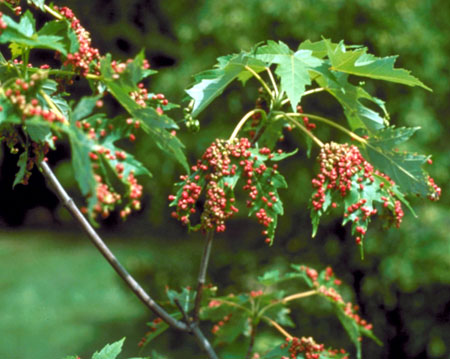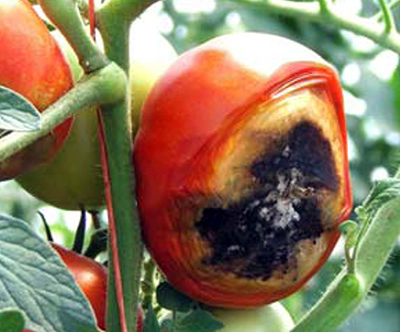Top five summer questions on the MSU Extension Lawn & Garden Hotline
Check out the top five hot topics to get your quick answer to what might be happening in your yard or garden.

While gardens and landscapes are actively growing and beginning to produce, so too are issues and problems. Michigan residents continue to use Michigan State University Extension resources to help answer their lawn and garden questions. For example, MSU Extension staffs a Lawn & Garden Hotline at 1-888-678-3464 (available Monday, Wednesday and Friday from 9 a.m.-noon EST) and the Ask an Expert online resource (available 24/7) where you can upload your questions and photos. Read on for the most common questions being asked this summer for an immediate answer and possible solution to what might be ailing something in your yard or garden.
What are the top five questions being asked? They include:
- What do I do about all these Lymantria dispar caterpillars?
- What’s wrong with my shrub?
- My maple has black spots or weird bumps on its leaves, will it die?
- Why is there an orange growth on my apple or crabapple?
- Why are the bottoms of my tomatoes turning brown?
Check out these photos, descriptions and helpful resources to see if you have something like this is occurring in your yard or garden.
What can I do about all these Lymantria dispar caterpillars?

Callers are asking about the many caterpillars that are everywhere, such as on their deck, trees or patios. While several different caterpillar species attack Michigan trees, the Lymantria dispar, formerly gypsy moth, caterpillar is a common nuisance this year. Read more in “Lymantria dispar caterpillars are out and about.” The sheer number of them can be annoying. If you’d like to know what you can do, read “Dealing with Lymantria dispar around your Home and Property.”
You can search for egg masses now and destroy them; this will reduce next year’s population. As for the devastation they cause via defoliation, many trees will survive. Be sure that trees do not suffer from drought stress as this may cause them to die. Make sure your trees and shrubs receive enough water weekly. They should be getting at least 1 inch per week. Most trees can recover from leaf loss if they receive enough water and nutrients. It’s important to note that once a population peaks, it drops off due to natural causes of either the Entomophaga fungus or a virus. Even more MSU resources on this topic are available at Integrated Pest Management – Lymantria dispar.
What’s wrong with my shrub?

Callers are noticing yellowing leaves or their shrubs just don’t look as green or healthy as they normally do. Earlier this summer, many areas of the Lower Peninsula had long periods without water. This extended dryness causes stress on trees and shrubs. Once they are stressed, they are even more prone to attack by spider mites and other insects.
Spider mites feed on plants by piercing and sucking plant tissues. You may see signs of them on the lower leaf surface along with webbing. Make sure your shrubs are getting at least 1 inch of water per week. We don’t usually suggest using an insecticide to get rid of spider mites, as this will kill any of the many beneficial insects that feed on mites. You can use a spray of water, making sure you get the undersides of leaves and new leaves, to spray off some of the mites. You can also use a mix of dish soap as well. You will need to spray the water or soap every four to seven days, as this is how often the eggs will hatch.
My maple has black spots or weird bumps on its leave, will it die?

If your maple has black spots on its leaves like the one in the photo, don’t be distressed. Although unsightly, this fungal disease, called tar spot, causes no severe problems for your maple, nor will it kill your tree. Many Norway maple cultivars are more prone to this disease because they are already stressed due to environmental conditions they are not adapted to. One thing you can do to try to reduce infection the following year is to rake and destroy the leaves by practicing good sanitation. Do not use these leaves for mulch around your maple trees as they will contain fungal spores, which may reinfect the same trees next year. Read more about this in the MSU Extension article, “Black dots on maple: Tar spot.”

Or, maybe your maple’s leaves are full of bumps, also known as galls, as seen in the photo below. Although grotesque, these unsightly bumps will not kill your tree. Galls are actually the tree’s response to a mite that has made its home within the leaf tissues. Many different mites use specific trees and create a plethora of interesting galls. Read more about this in the MSU Extension article, “What are these ugly bumps on my tree’s leaves?”
Why is there an orange growth on my apple or crabapple?

Callers have been asking about what’s causing the orange spots on their apple or crabapple leaves. This is caused by a disease called cedar-apple rust, which requires two hosts, cedars and apples, to complete its lifecycle. The fungus first infects cedar and then its spores are spread to apples or crabapples and infect their leaves, resulting in the orange spots. In severe cases, it may cause defoliation.
Keep your tree well-watered to reduce additional stress. Give at least 1 inch of water per week. If possible, you may want to consider removing cedar or consider resistant apple or crabapple varieties.
Why are the bottoms of my tomatoes turning brown?

Nothing can be more frustrating to tomato gardeners than seeing something severely wrong with their tomatoes. We are getting calls about browning bottoms of developing fruit. This is called blossom end rot and is caused by an uneven amount of moisture being provided to the plant. The browning occurs because calcium has not been taken up due to lack of soil moisture and results in tissue death.
You can eliminate blossom end rot by applying a 3-inch layer of organic mulch around tomatoes and other fruiting vegetables. Make sure they receive at least 1 inch of water weekly, and water only at the base.



 Print
Print Email
Email